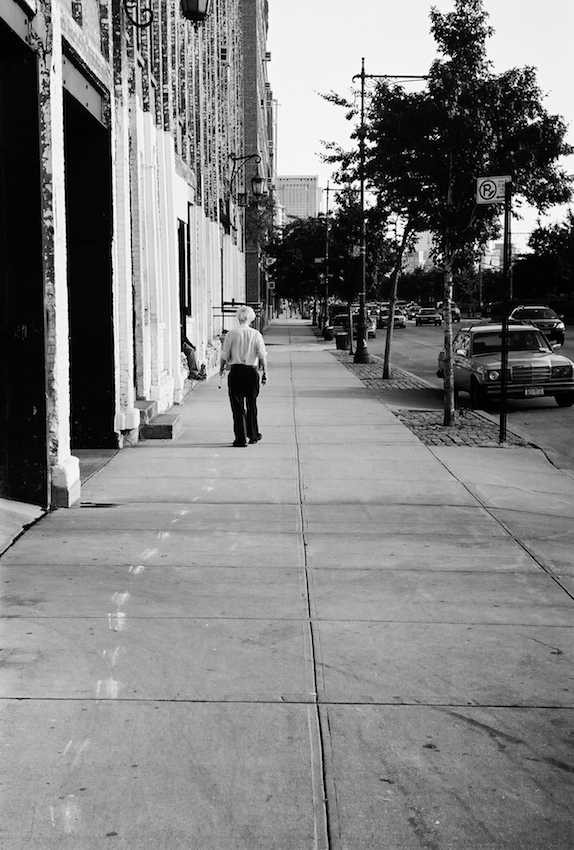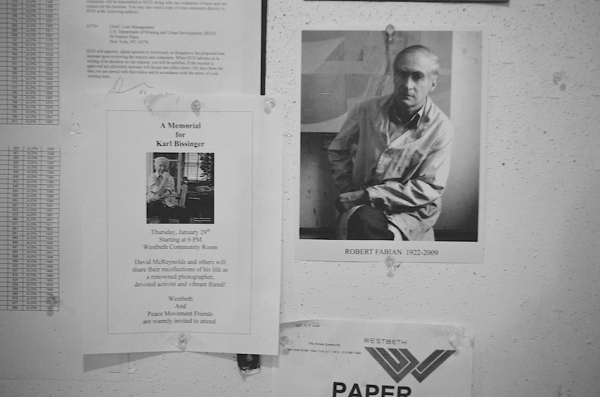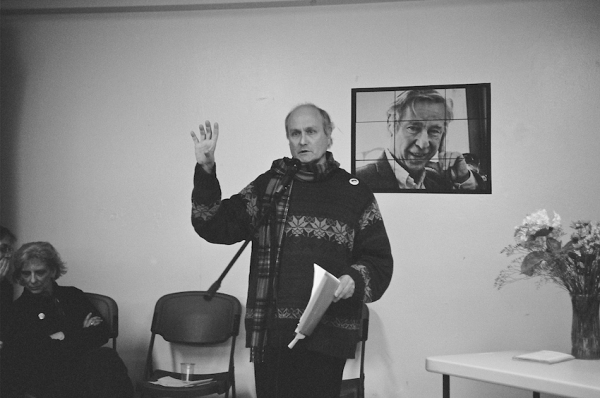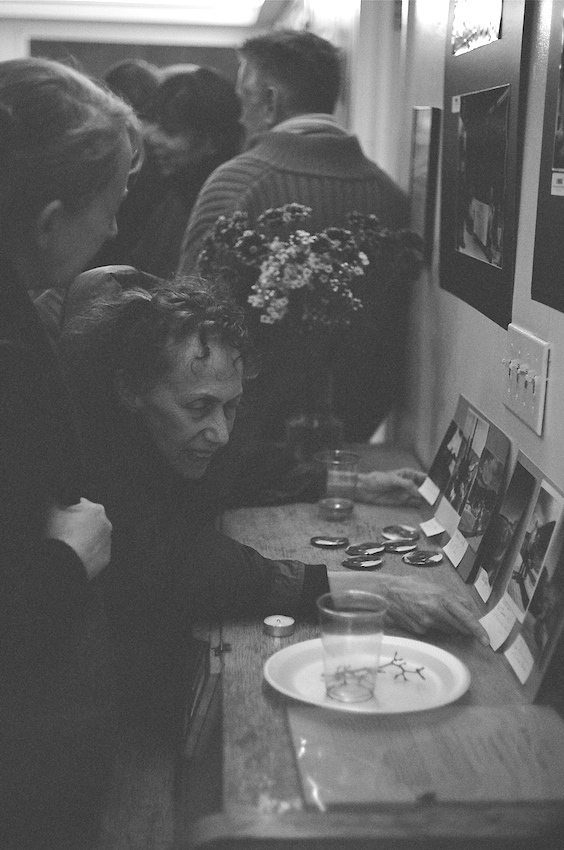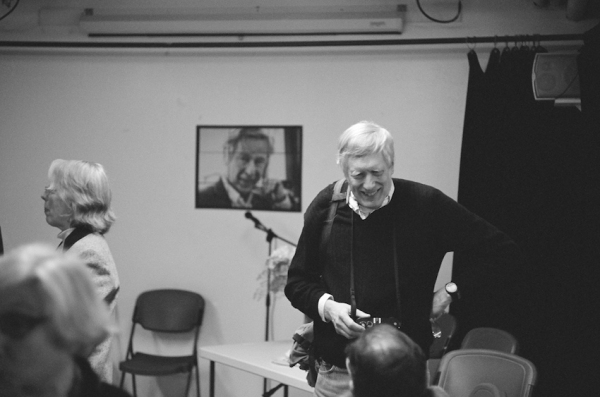Carl Bissinger, Portfraitist, Dies at 94
페이지 정보
- 작성자 : 이재유
- 작성일 : 09-02-01 05:59
관련링크
본문
저의 M2의 원 주인이신 Carl 할아버지가 돌아가셨습니다.
제가 만난분중 가장 사랑스러운 분이셨고 인격적으로 뛰어나신 분이셨습니다.
목요일의 Memorial Service에 다녀왔습니다. 많은 분들이 오셔서 가시는 분의 기억을 나누셨습니다.
뉴욕 타임즈의 부고 기사를 옮겨봅니다.
댓글목록
이재유님의 댓글
 이재유
이재유
부고 기사를 보실려면 오른쪽 맨위에 skip the advertisement...를 누르셔야 합니다.. 링크가 바로 가지가 않네요.
Karl Bissinger, whose lustrous black and white portraits created a memorable gallery of the leading figures on the postwar American arts scene, died Wednesday at his home in Manhattan. He was 94.
Catherine Johnson, 2005, New York Times
Karl Bissinger More Photos »
Multimedia
Slide Show
Portraits of the Artists
His death was confirmed by Catherine Johnson, the editor of “The Luminous Years: Portraits at Mid-Century,” a collection of Mr. Bissinger’s work.
As a photographer for magazines like Flair, Harper’s Bazaar, Vogue and Town & Country, Mr. Bissinger created indelible images of the new generation of writers, actors, dancers and free spirits who were reshaping American culture after World War II. He photographed an absurdly youthful Truman Capote on the set of a Jean Cocteau film in Paris, a skinny Marlon Brando leaning languidly in front of a round window in a Manhattan sublet and Paul Bowles sitting cross-legged against the tiled walls of a cafe in Marrakesh.
One of his most recognizable photographs, taken in 1949, shows Gore Vidal, Tennessee Williams, the Balanchine ballerina Tanaquil LeClercq, the artist Buffie Johnson (who died in 2006) and others seated around a table in the garden of the Cafe Nicholson in Manhattan, their faces bright with promise. It is, in effect, a class picture of the young and the talented in the American arts, more than ready for their close-ups.
Mr. Bissinger’s photographs split the difference between high-gloss fashion photography and reportage, reflecting the rawer, more emotive style asserting itself across the arts in the postwar era.
“These were true environmental portraits,” Catherine Johnson said. “These people did not have publicists or handlers. They came in their own clothes, without makeup. He often said that environment is a psychological mirror.”
Mr. Bissinger was born in 1914 in Cincinnati, where he began studying art at the Cincinnati Art Museum while in high school. He then moved to Manhattan and enrolled in the Art Students League, where he studied painting.
After decorating windows for Lord & Taylor in the 1940s, he found work as a stylist for the Condé Nast photographic studios, where he worked with, and befriended, several of the staff photographers, including Irving Penn, George Hoyningen-Huene, John Rawlings and Cecil Beaton. Richard Avedon, one of several friends with whom Mr. Bissinger shared a cottage on Fire Island, encouraged him to take his own pictures, lending him cameras and his studio for his first test photographs. His first subjects were Avedon’s wife, Doe, and the writer James Baldwin.
Lillian Bassman, the art director for Hearst magazines, gave Mr. Bissinger his first assignment, for the newly created Junior Bazaar. He soon began doing portraits and the occasional fashion shoot for Harper’s Bazaar, Vogue, Theater Arts and Town & Country, gravitating toward painters, poets and writers as subjects.
“I was drawn to portraits of artists for the obvious reason,” he said. “Their world was more interesting to me than the fashion scene.”
Many of his portraits and travel photographs appeared in the 12 issues of the short-lived but influential magazine Flair, edited by Fleur Cowles. As a staff photographer for Flair Mr. Bissinger photographed the Duke and Duchess of Windsor, John Wayne, John Ford, Gary Cooper, Colette and Katharine Hepburn. His work for Flair and Theater Arts was collected in “The Luminous Years” (Abrams, 2003).
In the early 1950s Mr. Bissinger’s interests swung to politics, and he gradually abandoned photography. A onetime member of the Communist Party, he became active in several peace organizations. In the early 1960s, at a demonstration against air-raid drills, he met Judith Malina and Julian Beck, the founders of the Living Theater, and for several years took up his camera again to record their performances. As the Vietnam War heated up, however, he devoted nearly all his time to working as a draft counselor at the Greenwich Village Peace Center. Later, as a member of the War Resisters League, he crusaded for nuclear disarmament.
He is survived by his son, David B. Fechheimer of San Francisco, and two grandchildren.
Mr. Bissinger took many photographs at the Cafe Nicholson, the restaurant on East 58th Street he had created with Johnny Nicholson, a fellow window-dresser from Lord & Taylor. A favorite with artists and a launching pad for the chef Edna Lewis, it made a natural setting for a photograph illustrating an article in the first issue of Flair, “The New Bohemians.”
“I do not know what effect the picture has on those who now look at it, but I think it perfectly evokes an optimistic time in our history that we’re not apt to see again soon,” Mr. Vidal wrote in Smithsonian magazine last year. “So study this picture, and see what optimistic people looked like as they began what they thought would be lifelong careers, and in some cases indeed lasted as we lost more and more of a country that is no country without Karl Bissinger to make art of it.”
김기환★님의 댓글
 김기환★
김기환★
저는 이재유선배님을 통해 알게된 분이지만
그 인생이 상당히 파란만장하였던 분이더군요...
좋은세상 즐겁게 여행하시고 떠나시는 다음 행선지에서
오래도록 평안하시길 바라겠습니다..
삼가 고인의 명복을 빕니다.
이재유님의 댓글
 이재유
이재유
|
원 작성회원 : 김기환★
저는 이재유선배님을 통해 알게된 분이지만
그 인생이 상당히 파란만장하였던 분이더군요... 좋은세상 즐겁게 여행하시고 떠나시는 다음 행선지에서 오래도록 평안하시길 바라겠습니다.. 삼가 고인의 명복을 빕니다. |
애효..그래도 세계 평화에 이바지 하신분이고... 메모리얼 서비스에 저 정도 사람들이 모였으면 정말로 대단하시지요.. 게다가 뉴욕타임즈 아트 & 디자인 섹션에 부고기사까지 났을정도면... ^^)> 저같은 사람은 저세상으로 떠났을때 사람들이 저를 어떻게 기억해줄까 하고 생각해 봤습니다.
이메일무단수집거부
이메일주소 무단수집을 거부합니다.
본 웹사이트에 게시된 이메일 주소가 전자우편 수집 프로그램이나 그 밖의 기술적 장치를 이용하여 무단으로 수집되는 것을 거부하며, 이를 위반시 정보통신망법에 의해 형사 처벌됨을 유념하시기 바랍니다.

 회원가입
회원가입 로그인
로그인